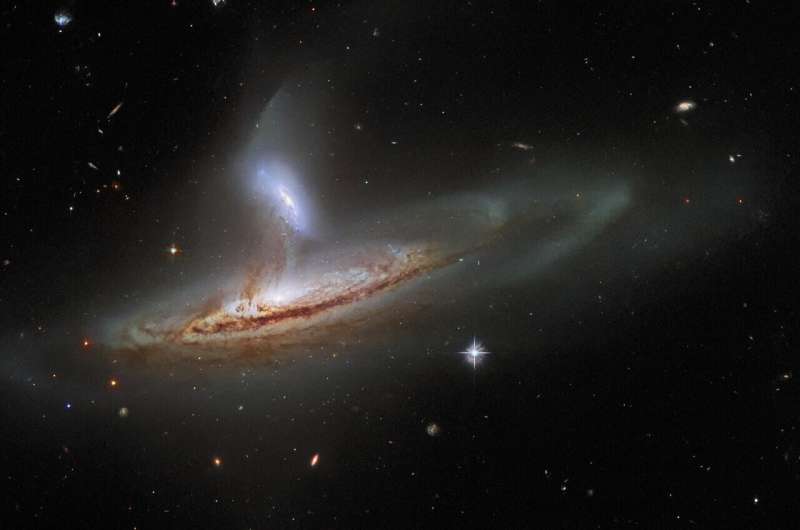Credit: Text credit: European Space Agency (ESA)Image credit: ESA/Hubble & NASA, J. Dalcanton, Dark Energy Survey, Department of Energy (DOE), Cerro Tololo Inter-American Observatory/NoirLab/National Science Foundation/Association of Universities for Research in Astronomy (AURA), Sloan Digital Sky Survey (SDSS); Acknowledgment: J. Schmidt
This image from the NASA/ESA Hubble Space Telescope feels incredibly three-dimensional for a piece of deep-space imagery. The image shows Arp 282, an interacting galaxy pair composed of the Seyfert galaxy NGC 169 (bottom) and the galaxy IC 1559 (top). Interestingly, both galaxies have monumentally energetic cores known as active galactic nuclei (AGN), although that is difficult to tell from this image, which is fortunate. If the image revealed the full emission of both AGNs, their brilliance would obscure the beautifully detailed tidal interactions we see in this image.
Tidal forces occur when an object's gravity causes another object to distort or stretch. The direction of tidal forces is away from the lower-mass object and toward the higher mass object. When two galaxies tidally interact, gas, dust, and even entire star systems can move toward one galaxy and away from the other. The image reveals this process in action as delicate streams of matter visibly link the two galaxies.
Astronomers now accept that an important aspect of how galaxies evolve is the way they interact with one another. Galaxies can merge, collide, or brush past one another – each interaction significantly affecting their shapes and structures. As common as such interactions may be, it is rare to capture an image of two galaxies interacting in such a visibly dynamic way.
Provided by NASA's Goddard Space Flight Center
























